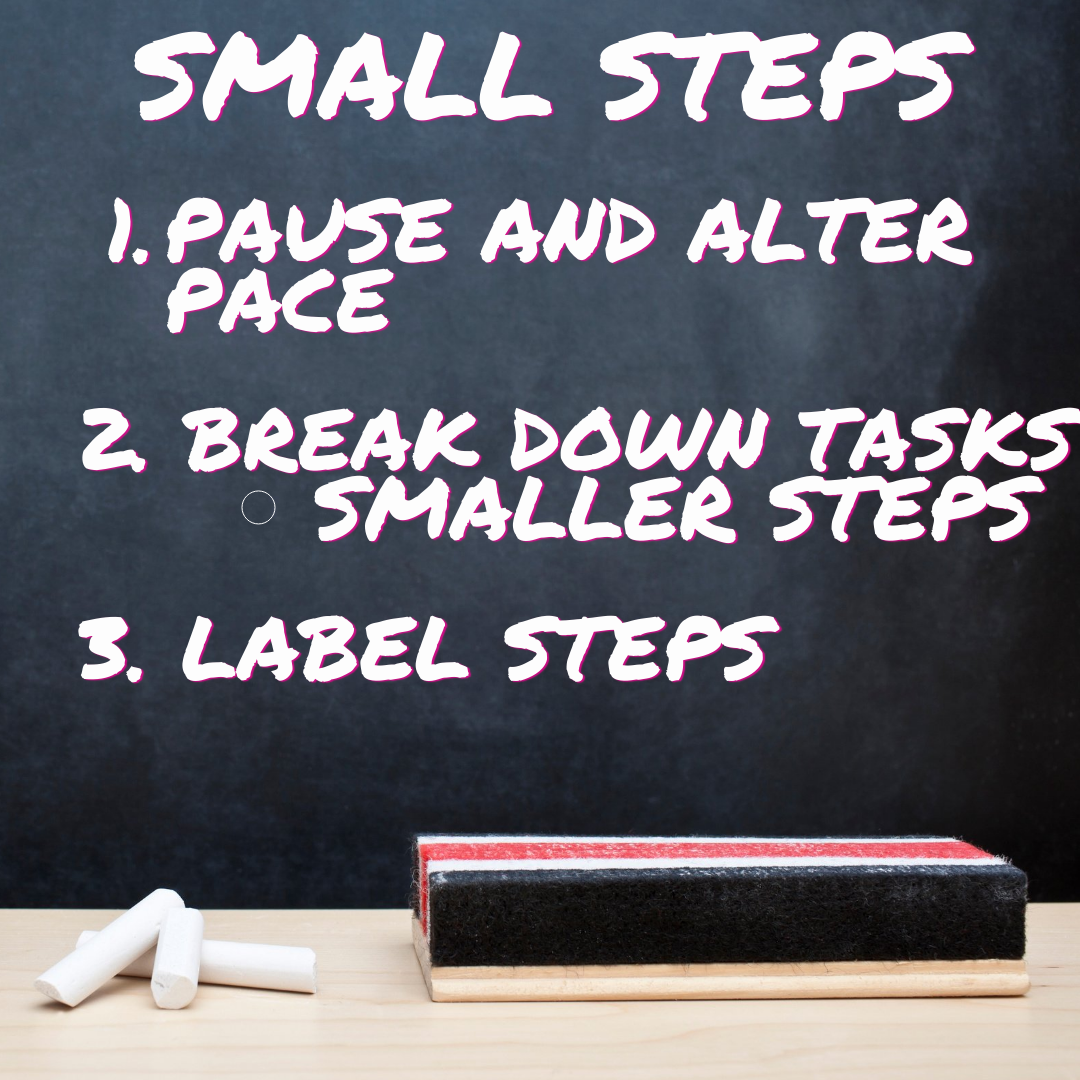FREEZE: ANXIETY IN THE CLASSROOM
We have all played the freeze game. When the music stops playing you remain still (Freeze) in place. The person who moves is out of the game. It has been approximately 9 weeks since school started and in this time we have had a common thread in many calls from our families’ teachers claiming non-compliance during certain sessions during the school day. The teacher claims that they have tried everything and the child is still refusing to work.
One of the amazingly enlightening experiences for me is having the opportunity to meet so many children with varying learning differences and work with their families. We have the opportunity to spend extended periods of time with them and observer them in stressful situations. We frequently witness the freeze we interpret as means of coping with information overload and/or anxiety regarding demands placed outside of their skill set. Children with anxiety and sensory integration challenges can freeze when presented with a task that is unfamiliar or difficult for them.
The most common call we have had in the last two months is our parents sharing that their child’s teacher contacted them to notify them that their child is non-compliant and refusing to work. Additionally, the teacher will state that they have tried everything and they still refuse to work.
On our end, we do not refer to this response to certain tasks as non-compliance. We prefer the term task avoidance. A child or teen that has an Individual Education Plan (IEP) has learning differences that impact their performance at school. With this advance notice, there cannot be an expectation that this child will perform at the same pace or ease as peers without IEP’s. The intent of an IEP is that the child will be provided with the tools, resources, and instruction to bridge the skills gaps resulting from the learning difference. The teacher should be aware that this child’s performance will vary initially till some of these skill gaps can be bridged.
So at the beginning of the school year after a pandemic with many children being out of school for a significant amount of time children with IEP’s should have additional time allotted for adaptatie.
When there is an IEP in place the progress of this child should be based on skill acquisition based on their individualized goals as outlined in their individual education plan. Their performance should never be compared to a neurotypical peer.
So in this article, I want to discuss the situation of anxiety in the classroom and how that can often look like a child is frozen. When the child remains still it appears as if they are refusing to work. When a child is not performing the question to ask oneself is where is the skill gap or what is the skill needed. Then the next step is what strategy that can help the child overcome the anxiety they are experiencing in relation to these tasks. We very often when seeing this freeze reaction there is a demand placed that is outside the child’s ability.
Skill: Defrost
Strategy: Reduce pace and task
So when working with a child with anxiety it is so important to know that when the anxiety is high and they are not performing this is not a time to press forward and insist. The response should be to pause and allow some time for them to adjust to the situation. Give them a few minutes and perhaps allow an opportunity to go to the bathroom splash some water on the face or break for a few minutes.
Pause - allow a few minutes.
After a pause and consider minimizing the task. However, prior to minimizing the task repeat directions and do one problem with the child (sample). If it is a writing assignment get them started with a writing prompt. For example, write out the first sentence.
When children have self-regulation challenges they have a difficult time organizing their mind and body to start a task. Giving them additional time and a sampling of the work can help them get started. Also, assuring them that if they are not certain what they need to do they can ask for help. This is a model for self-advocacy.
Depending on the child’s IEP they may require additional instruction or a visual checklist (to-do list) to self-initiate and work toward building task endurance. Some children struggle with attention and language processing therefore they require more direction. I prefer a checklist so the teacher does not have to repeat themselves and it promotes independence.
Build: coping skills to defrost
Allowing time to defrost and settle into new routines and expectations. Some children take longer to adjust to new routines. When implementing any strategy note it should be consistently used for several weeks to know if is effective. In our experience anxiety is experienced when there is an independent working task involving writing or a long worksheet. It truly depends on the child’s learning difference. In our experience children with focus/attention struggle to stay on task for long periods and require task endurance to be built up in increments. Children with language deficits including those with autism take a longer time to process language and directions. For tasks suck as writing requiring generating and organizing language, you may witness task avoidance.
Tools: create task endurance and focus
checklists
highlight instructions and areas to be completed
choose either odd and even numbers of problems to reduce the length of the worksheet
first and then visual (could be post-it note separating task in two)
folder with one pocket labeling one side to do and finished
When students struggle with self-regulation it impacts their ability to organize and initiate tasks visuals such as checklists, folders and breaking down tasks into steps increases task endurance.



